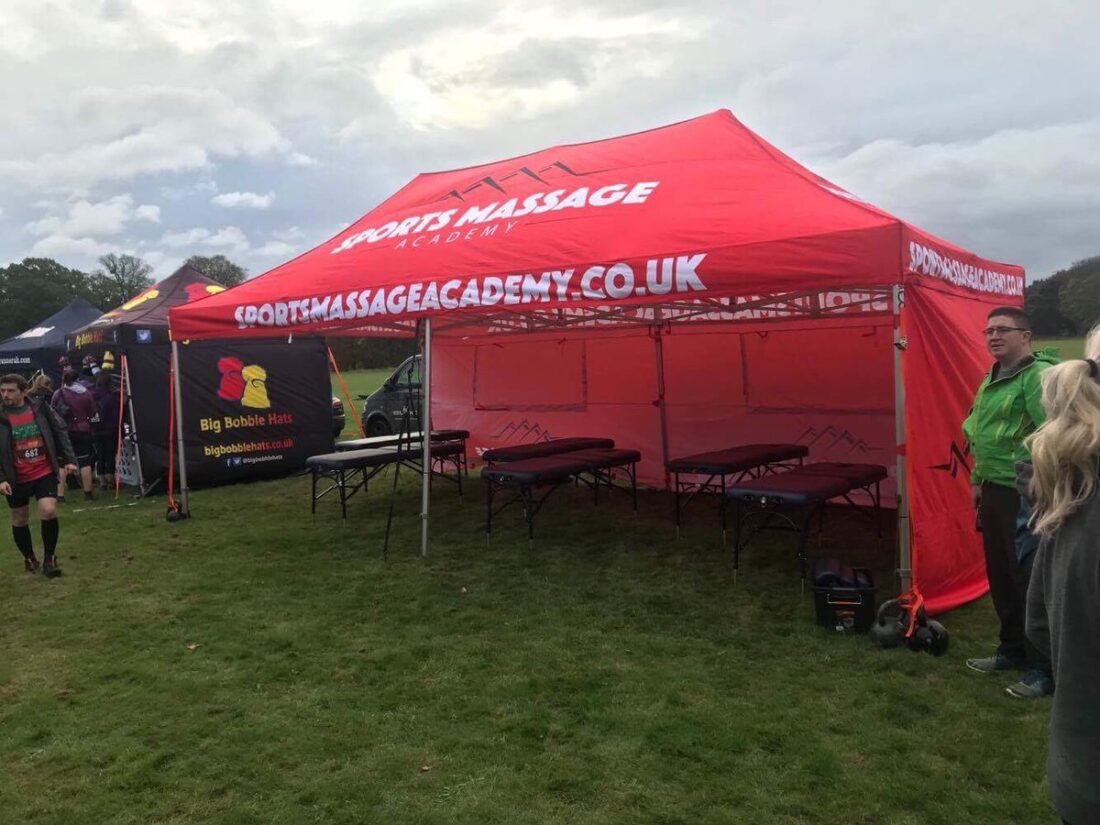
Event Sports Massage – a Look at the Timings
We know that Sports Massage has loads of great benefits, but when is best to have them to get
the most out of it?
Alex Hall, Managing Director of the Sports Massage Academy and ex Iron Man triathlete is highly experienced in the use of sports massage therapy to aid and enhance sporting performance for elite athletes. Here Alex shares valuable advice on the timings of sports massage around an event.
Leading up to an event
A sports massage can really help as part of a taper leading into an event, ensuring that the adverse effects of all your hard training, such a DOMS, have been banished. I like to work on my clients with myofascial release, soft tissue release (STR) and muscle energy techniques (METs); whilst avoiding frictions and trigger points which can leave localised areas of acute soreness. Some of the side effects can be: Feeling heavy, lethargic and a little sore, so ideally you’ll want to get this booked in at least 3 days before the main event. If a client has a big event on Sunday, a massage on Tuesday or Wednesday would be ideal so they hit the start line in the best possible shape.
During a training cycle
Heavy training can lead to hypertonicity (tightness) in the muscles and general fatigue. Sports massage can help to reduce muscle tone via a parasympathetic nervous system response by using deeper, slower strokes. myofascial release, STR, trigger points and METs can all help, following a proper client assessment. Perfect timing would be the night before a rest day or block. Failing that, on the lead into an easy period of training. The client can then reinforce the work done in the clinic room by focusing on getting in some good sleep, nutrition, and maybe prescribed stretches. These stretches could be to target tight muscles or to work on developing flexibility as appropriate. Having a massage and then performing a hard training session will likely negate many of the benefits; and may even increase the risk of injury. Some studies have shown reduced muscle power and coordination in muscles and limbs that have just been massaged or statically stretched.
Pre-Event
On the day, a pre-event sports massage can be an excellent tool in preparation. Ideally performed 90-30 minutes before the event or race, the therapist should concentrate on using lighter, faster strokes to create a sympathetic nervous system response. A technique called tapotement is also commonly used which involves lightly and quickly beating target muscles (think Turkish massage). The therapist needs to also be aware of the role they play in an athlete’s mental preparation and should use appropriate language and subjects for discussion. It’s not uncommon to hear of therapists going through visualisation techniques with their
athletes, especially if they are perhaps the last person they speak to before the start.
Post-Event
Everybody loves a post-event ports massage and, here at the Academy, we try to get out to as many as we can! Not only does it help to relax tired and aching muscles but also offer some mental respite, and perhaps give you someone else to brag to (we don’t mind). It’s best to get on the table as soon as possible while you’ve still got elevated circulation and are warm. Post event, the therapist should be using slower, deeper application of our basic techniques, effleurage and petrissage, and maybe a little bit of myofascial release and stretching too. This isn’t the time to deal with injuries (if you’ve picked something up in the event you should be in the medical tent), or use anything nasty like frictions or trigger points. As the therapist is unable to assess you properly in this environment, this should be left for the days after when you have more time.
Recovery
If you’ve competed hard, you might develop tightness and/or delayed onset of muscle soreness (DOMS) in the 48 hours after the event. 24 to 72 hours post event is the perfect time to see your therapist where we’ll have our full arsenal of techniques at our
disposal to help you recover. If you’ve picked up an injury it will be better to wait a bit longer. Consider getting it checked out by a medical professional and come to us once any pain/swelling has started to subside, so we can assess you properly and work out the best course of action, usually after 3 – 7 days.
If you are interested in a career in Sports Massage Therapy or would like to add some new skills to your massage therapy practice, Alex and the team at the Sports Massage Academy would be delighted to hear from you.
t. 03300 571873 | e. info@sportsmassageacademy.co.uk | w. sportsmassageacademy.co.uk

